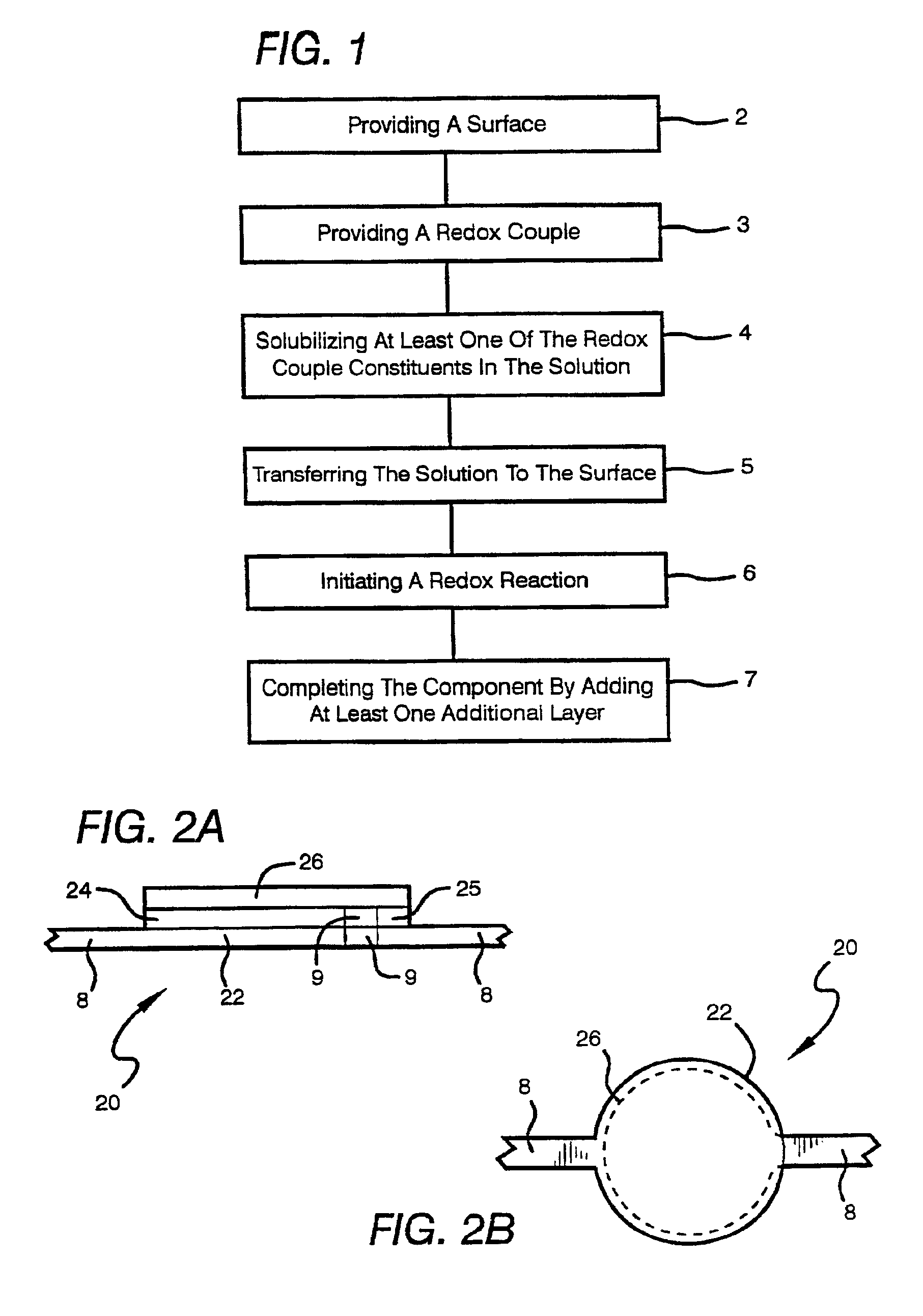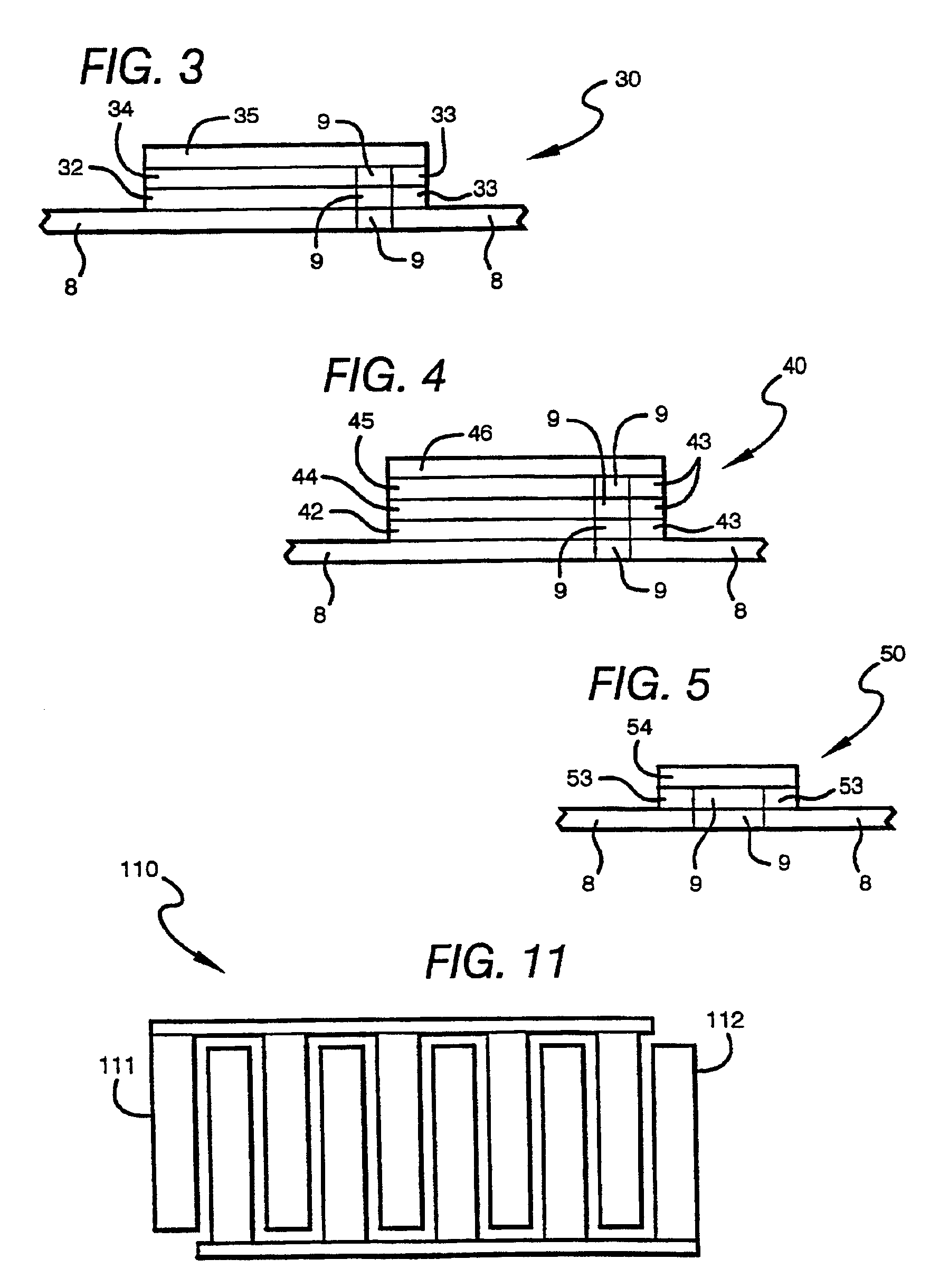Printing of electronic circuits and components
- Summary
- Abstract
- Description
- Claims
- Application Information
AI Technical Summary
Benefits of technology
Problems solved by technology
Method used
Image
Examples
example 1
Copper Traces
Copper traces can be prepared by depositing a solution of copper (II) formate in conjunction with a nitrogen donor molecule. 2.0 g of copper (II) formate tetrahydrate was taken in a 100 ml round bottom flask and 6.8 g of cyclohexylamine was added to it. The mixture is stirred at room temperature (25-30° C.) for about 5 to 6 days to obtain a homogeneous viscous mass. Another 0.5 g of cyclohexylamine was added and stirring continued for another 24 hours, a thick paste was obtained. The viscosity of the solution was modified by adding an approximately 2 g of cyclohexylamine. The solution was dispensed using an ink-jet type printer in lines approximately 25 μm wide and 0.2 μm high. The deposited solution was then microwaved for 10 seconds, yielding substantially pure copper traces.
example 2
Insulators
4.5 g Kynar 721 PVDF is used to dissolve the binder in 5.6 g of NMP. The mixture is heated to 120° C. to ensure the PVDF dissolves fully. 97 g aluminum oxide powder was added. The slurry is mixed for 12 hours. The viscosity of the slurry is adjusted using NMP depending on the printing method.
example 3
Dielectrics
In a particular example barium titanate dielectric materials can be produced. 10 g of titanium (IV) isopropoxide in 30 ml of isopropyl alcohol in a 100 ml round bottom flask with a stirrer bar. In a 50 ml beaker 4 g of isobutyric and 5.5 g of acrylic acid dissolved in 20 ml of isopropyl alcohol. This solution of mixed acids was slowly added to the stirring solution of titanium (IV) isopropoxide prepared above. Stirring was continued for three hours at room temperature. A clear solution is obtained. 23.2 ml of the resulting solution was taken and added to a solution of 7 g of barium perchlorate was dissolved in about 80 ml of isopropyl alcohol. This mixture is allowed to stir for 1 hour to obtain a clear solution. This clear solution is printable.
PUM
| Property | Measurement | Unit |
|---|---|---|
| Length | aaaaa | aaaaa |
| Length | aaaaa | aaaaa |
| Length | aaaaa | aaaaa |
Abstract
Description
Claims
Application Information
 Login to View More
Login to View More - R&D
- Intellectual Property
- Life Sciences
- Materials
- Tech Scout
- Unparalleled Data Quality
- Higher Quality Content
- 60% Fewer Hallucinations
Browse by: Latest US Patents, China's latest patents, Technical Efficacy Thesaurus, Application Domain, Technology Topic, Popular Technical Reports.
© 2025 PatSnap. All rights reserved.Legal|Privacy policy|Modern Slavery Act Transparency Statement|Sitemap|About US| Contact US: help@patsnap.com



